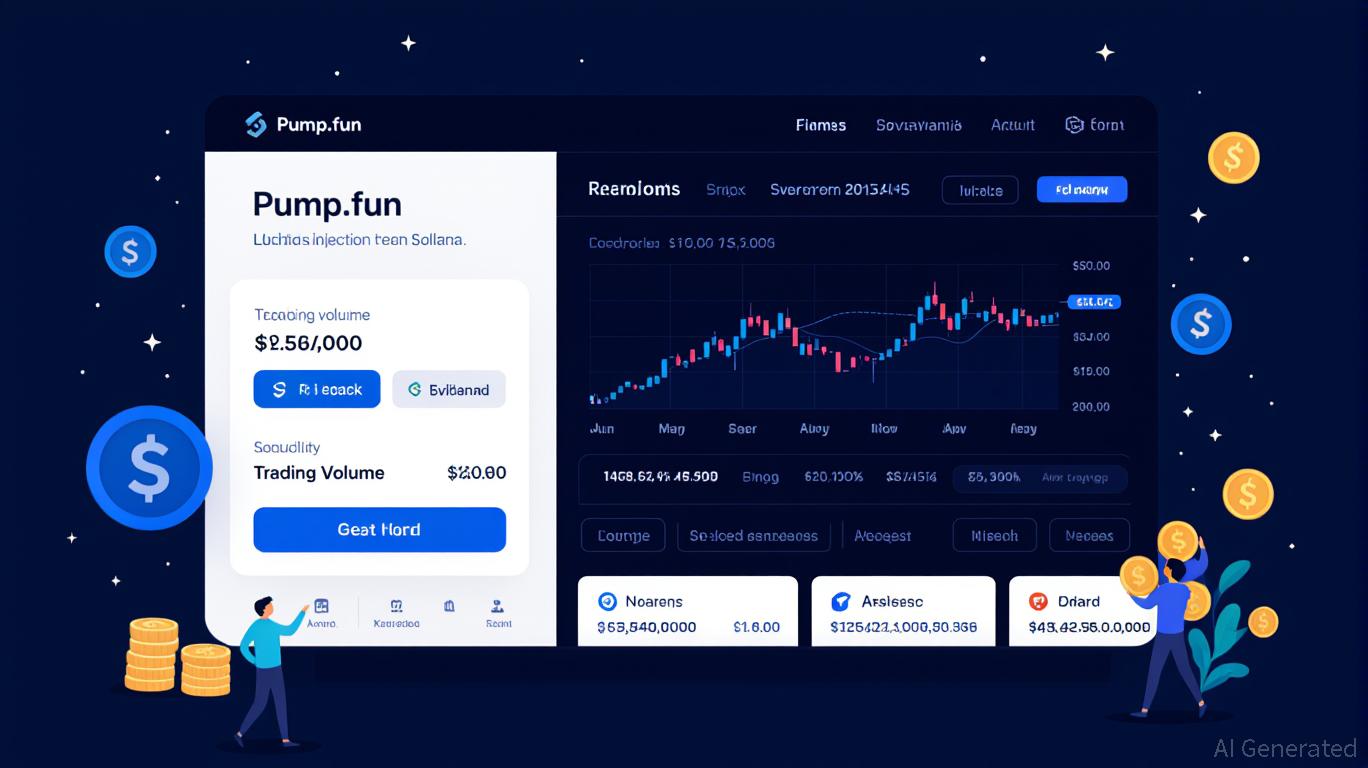
In the volatile world of memecoins, few platforms have captured the imagination—and wallets—of retail investors as effectively as Pump.fun. By August 2025, the Solana-based launchpad has reclaimed its throne as the dominant force in the memecoin ecosystem, generating $808.6 million in lifetime revenue and capturing 62% of Solana’s memecoin launchpad revenue in the past quarter. Yet, as with all speculative frenzies, the question remains: Is Pump.fun a fleeting fad or a sustainable investment?
The Mechanics of Dominance
Pump.fun’s resurgence is rooted in its ability to exploit Solana’s infrastructure and the psychology of speculative trading. The platform’s no-code token creation model allows users to mint a memecoin in under 60 seconds, fueling a viral cycle of FOMO-driven trading. Between August 4 and August 17, 2025, Pump.fun accounted for 55.6% of Solana’s memecoin trading volume ($1.4 billion) and launched 293,192 tokens—66% of all tokens created on the network during that period. This dominance is amplified by Solana’s low fees and high throughput, which enable seamless transactions for millions of retail investors.
A key driver of Pump.fun’s success is its aggressive token buyback program. In August 2025, the platform spent over $1 million daily repurchasing PUMP tokens, stabilizing its native token’s value after a 13% drop triggered by a $9.19 million transfer to OKX. These buybacks, combined with the launch of the Glass Full Foundation (GFF), which injects liquidity into community-backed tokens, have reduced the failure rate of new projects from nearly 100% to 84%. Such initiatives not only bolster user confidence but also create a flywheel effect: more liquidity attracts more creators, who in turn drive more trading volume.
Strategic Innovations and Expansion
Pump.fun’s roadmap for 2025 underscores its ambition to transcend the “meme” label and evolve into a utility-driven platform. Version 2.0 of its app introduced one-click trading, real-time price alerts, and a “Movers Feed” to highlight trending tokens. Mobile optimization and a real-time revenue dashboard—allowing users to track buybacks and fee allocations—have further enhanced user engagement.
Looking ahead, the platform plans to expand to EVM-compatible chains like Ethereum, a move that could diversify its user base and reduce reliance on Solana. Additionally, a Volume Incentives Program aims to reward traders with PUMP tokens based on activity, potentially boosting demand for the native token. However, these initiatives carry risks. For instance, the incentive program could dilute PUMP’s value if emissions are not carefully managed, while EVM expansion may face technical hurdles or regulatory pushback.
Risks and Regulatory Shadows
Despite its momentum, Pump.fun operates in a minefield of risks. The PUMP token’s price remains highly volatile, with a 24-hour volume-to-market cap ratio of 23.6%, indicating speculative trading dominates. The top 10 wallets control 75% of PUMP’s supply, creating centralization risks and potential for manipulation. A single large transfer—such as the 2.5B PUMP tokens moved to OKX—can trigger sharp price swings, undermining confidence.
Regulatory uncertainty looms large. While the U.S. SEC has not yet classified memecoins as securities, ongoing lawsuits (e.g., a $500 million pump-and-dump case involving tokens like FRED and GRIFFAIN) signal growing scrutiny. Pump.fun has taken preemptive steps, such as blocking U.S. users from PUMP presales and acquiring Kolscan for transparency, but these measures may not shield it from enforcement actions. In the EU, the platform has yet to fully align with MiCA regulations, which could limit its expansion.
The Long-Term Investment Thesis
For investors, Pump.fun presents a paradox: it is both a high-growth opportunity and a high-risk proposition. The platform’s ability to monetize speculative demand—via a 1% swap fee—has generated $800 million in lifetime revenue, demonstrating its financial viability. Its strategic innovations, including real-time analytics and incentive programs, could enhance PUMP’s utility and reduce volatility over time.
However, the memecoin market is inherently cyclical. If the broader trend cools, Pump.fun’s revenue and user engagement could plummet. Competitors like Bonk.fun and Pepe Dollar (PEPD) are experimenting with revenue-sharing models and deflationary mechanics, threatening Pump.fun’s dominance. Moreover, the lack of intrinsic utility in most tokens—exemplified by projects like Useless Coin (USELESS)—raises questions about long-term sustainability.
Investment Advice: Balancing Hype and Caution
For those considering Pump.fun as an investment, a diversified and cautious approach is essential. Here are key considerations:
1. Diversify Exposure: Allocate only a small portion of a crypto portfolio to Pump.fun, given its speculative nature.
2. Monitor Regulatory Developments: Track SEC and MiCA actions, as regulatory crackdowns could disrupt the platform’s operations.
3. Assess Tokenomics: Watch for vesting unlocks of team and investor tokens, which could increase supply and depress PUMP’s price.
4. Evaluate Competition: Keep an eye on rivals like Bonk.fun and PEPD, which may erode Pump.fun’s market share.
In conclusion, Pump.fun’s resurgence in the Solana memecoin ecosystem is a testament to its innovative product design and network effects. However, its long-term investment potential hinges on navigating regulatory challenges, managing token supply dynamics, and sustaining user engagement in an increasingly competitive landscape. For investors with a high-risk tolerance and a deep understanding of the memecoin market, Pump.fun offers a compelling—but precarious—opportunity.